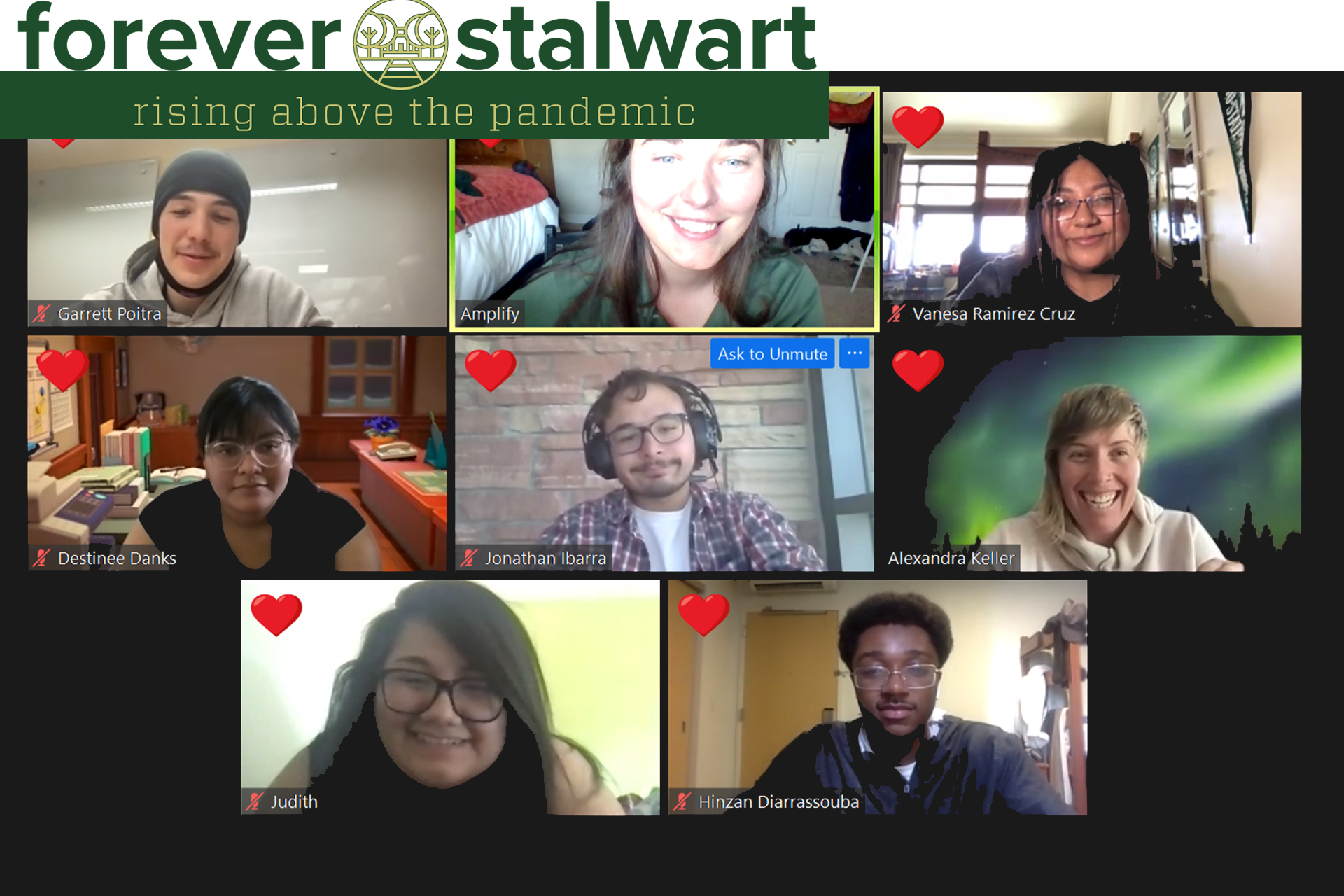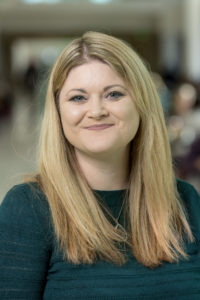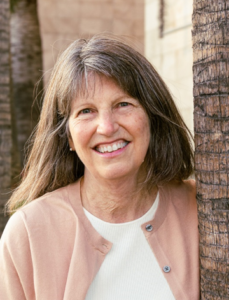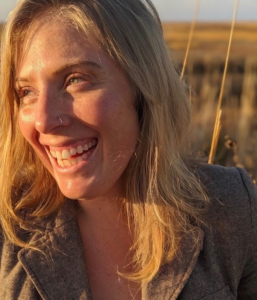
Second-year Leadership Fellows in the College of Natural Sciences Amplify Community participate in a debriefing on their role as learning assistants for the Amplify first-year seminar courses, where they explored the power of diverse perspectives in STEM.
When Colorado State University, like other higher ed institutions, shifted to remote learning in March 2020 due to the pandemic, many faculty had to quickly learn how to use online platforms such as Zoom and Microsoft Teams for online learning, not just meetings.
Some assumed that it was a necessary short-term concession that might hurt the quality of the learning experience, but CSU faculty report that they saw various unanticipated benefits from going remote. And many intend to continue using virtual elements even after all face-to-face classes are fully restored.
One of the most commonly reported advantages is the ability to let students who are ill or caring for a loved one attend class from home, which they wouldn’t be able to do in a strictly in-person format.

Student access
Susan Opp, director of the new Master in Public Policy and Administration program and a professor in the Department of Political Science, says that while her MPPA classes were held in person over the past year, she learned how to use Zoom because she had students who could not attend in person after possible COVID-19 exposure.
“Logistically, what I’ve done is use my PowerPoint presentation like normal, hooked up to the projector in the classroom, but I log into Zoom and also share my screen with the students who are remote for the class,” she explains. “This enables them to participate through Zoom, unlike with Echo360, which isn’t set up for two-way interaction.”
Being remote also allows students to hear from guest speakers who would not be able to visit classes in person, even before the pandemic. This semester, Opp used Zoom to bring in speakers from Rice University in Houston; Zillow in Seattle; Tarrant County and West University Place, Texas; the Denver Public Library; and Jefferson County.
“One of the biggest benefits of this ‘Zoom-in’ guest speaking is that a diversity of voices can be created,” Opp says. “These people bring their own professional experiences as well as their personal experiences into the classroom and create a great opportunity for learning for the future public servants in the MPPA program. All have been generous with their time and willing to follow up with students. Without Zoom, most — if not all — of these people would never get to make it to campus without huge expenses.”
Other guest speakers
Opp is not alone. The Department of Economics has been holding its weekly seminar series on Zoom since Spring 2020.
“While we were initially ambivalent about the idea of having a Zoom seminar series, it has allowed us to bring in top-tier academics from around the world whose research interests closely match those of our faculty and graduate students,” said Professor Terry Iverson. “For example, we recently ‘hosted’ William Spriggs from Howard University, a leading labor economist studying the economics of race, who was part of the Obama administration.”
Additional speakers over the last year have included economists from Oxford, Columbia and Berlin.
“Because these individuals are in high demand, it would be difficult and costly to bring them out to CSU, but an hour-long Zoom conversation is an easy ask,” Iverson said.

Food safety classes
Marisa Bunning, a professor in the Department of Food Science and Human Nutrition and a CSU Extension specialist, has brought several guests into her food safety classes remotely. They include staff from the Colorado Department of Public Health and Environment as well as CSU alumna Rachel Scanlan, senior specialist for regulatory compliance in restaurant food safety at Chick-fil-A in Atlanta.
“I wonder why I didn’t start doing this sooner, because I had access to Zoom,” Bunning says. “Having to teach remotely forced me to become more comfortable with it. Remote learning has definite advantages, and we weren’t embracing them until things changed and we had to start relying on it.”
She adds that it lets students hear directly from experts in the field they’ll be entering.
“It’s important to hear about regulations from the regulators,” Bunning explains, referring to the virtual panel talk she hosted with CDPHE staff. “It gave the students a better look at what it might look like, working at a state agency.”
Better attendance, participation
“I was really surprised with what was possible on Zoom,” says Alexandra Keller, who teaches the “Perspectives and Communication in Science” seminar for first-year students in the College of Natural Sciences Amplify Community. “We had more attendance and engagement than we’ve ever had.”
In her course —part of the college’s Amplify Science Outreach Scholars Learning Community geared toward first-generation and marginalized students in the fields of science, technology, engineering and math — Keller found that Zoom gave students more options for engaging, depending on their learning style and comfort level. For example, she offered as many options for students to participate as possible, and found that some could easily unmute and speak, while others utilized the chat or the shared document that was offered as other options for participating. A handful of upperclass students who serve as learning assistants in the class checked in with students individually using private messaging, to gauge their needs and preferences.
“Being able to connect with students in real time was powerful,” Keller says, adding that the ability to record both video and chat allows her and the learning assistants to examine the dynamics of the students’ reactions and interactions after class.

More efficiency
She adds that using online breakout rooms for small group discussions is almost preferable to the way it works in person: moving people and desks around in a process that can be time-consuming.
“I used to be skeptical about online learning, but now I almost prefer it — it’s easier to track students in some ways, and it can make class much more efficient,” Keller explains. “A lot of us struggle with how to make class engaging within the short class times, especially since it takes time to get people settled in and out of small groups. With Zoom, you can make breakout rooms in an instant and set up collaborative online workspaces where students can work together on questions or problems. In some ways, this creates space for collaboration that would be harder to do in person, especially with big classes.”
Being on camera at home also seems to help students interact with their instructor and peers on a more personal, authentic level.
“Being real, being in our own homes, seeing my dog and seeing me when I was sick one day — that human element of all being in our own spaces can provide opportunities to feel more comfortable,” Keller says. “The more honest, vulnerable and real I am, the more my students seem to relate to me and the course content. I also believe in giving students opportunities for feedback early and often. When they see that you actually care about what they think and want, and will make adjustments to show that you value their feedback — that is powerful. When students know their perspective will be heard, they can learn. What would happen if we listened to our students more? In my experience, they have a lot to teach us.”
Forever Stalwart: Rising Above the Pandemic
This article is part of the “Forever Stalwart: Rising Above the Pandemic” series, telling the inside stories of how the CSU Ramily has rallied its brilliant minds, great hearts, creativity and collaborative spirit to continue its land-grant mission and overcome the challenges of COVID-19 with innovation and resilience.